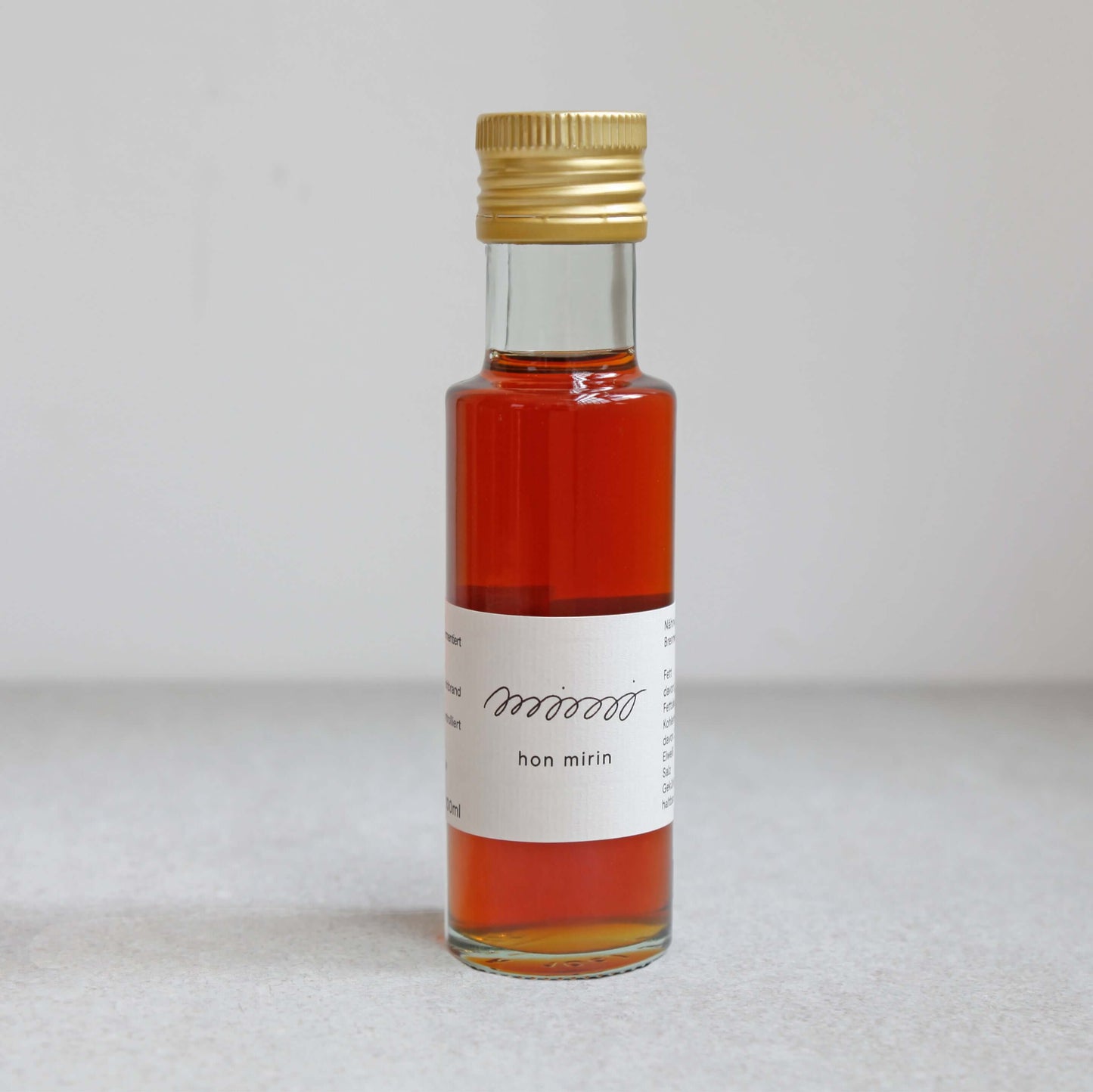Hon mirin was originally a very exclusive drink, as it combines three ingredients that were once particularly expensive and rare: white rice, mochi rice and alcohol. During the Second World War, rationalisation measures led to different qualities of mirin, some of which no longer have anything to do with the original ingredients or the way they were processed. These variants are marketed under the term mirin-style or mirin-fu, which means ‘like mirin’ in Japanese. Only Hon Mirin, also known as real mirin, is produced according to the traditional recipe. Nevertheless, most manufacturers also rely on short maturation times and neutral alcohol.
Today Hon Mirin is an indispensable basic ingredient in Japanese cuisine. Similar to sake, the famous Japanese rice wine, Hon Mirin is based on rice. However, hon mirin differs from sake in that alcohol is added to prevent further fermentation of the rice. Another difference is that the mash is traditionally stored for a longer period of time. During this storage, fermentation takes place in which the enzymes in the rice koji break down the starch and proteins in the glutinous rice. This process leads to the formation of various sugars, different amino acids, organic acids and aromatic components, which together make up the characteristic flavour of Hon Mirin.
In addition to real mirin, there are various mirin-like spices that differ significantly in terms of production process, ingredients and ultimately price. Some of these variants are enriched with salt or contain no alcohol. Genuine mirin, on the other hand, consists exclusively of the natural ingredients mentioned above. Due to its natural components, which are created by the enzymatic action of rice koji, it is valued for its unique ability to flavour dishes. Its individual components create a multi-layered effect that is difficult to replace, and compared to pure sugar, which only offers an intense sweetness, real mirin has nine different types of sugar. These are responsible for the elegant and gentle sweetness that characterises it. The different types of sugar also give the surfaces of dishes prepared with mirin a special lustre and shimmer. The amino acids and peptides that come from the fermented glutinous rice combine in a complex way with the sugars and other ingredients to create a deep richness and umami.
The alcohol contained in mirin facilitates the absorption of these umami components in food and intensifies the complex flavour. The interaction of alcohols, amino acids, organic acids and sugars changes the chemical structure of the odour components and thus eliminates odours.
